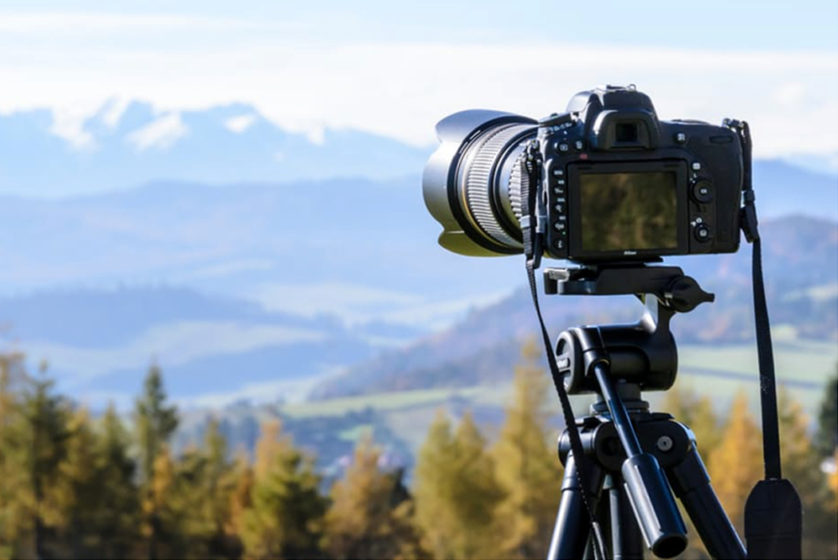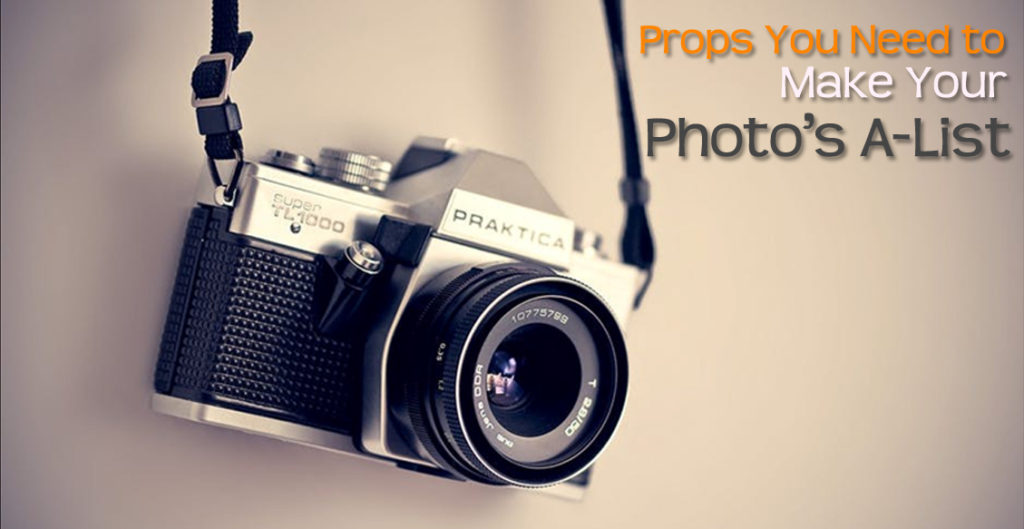The saying may go ‘all the gear, no idea’, but what if you have all the ideas and no gear. You may have visions of the dramatic landscape you want to photograph, the family portrait you want to capture or inspiration for the wedding you’ve been enlisted to document – but unless you have the right photography equipment or props, then your ideas are likely to amount to nothing. First things first, you don’t need to spend a fortune to take great photographs. With iPhones now boasting cameras which rival some of the more expensive cameras on the market, taking a great photograph has become more accessible for those who have a love of photography, but don’t want to invest in an all-singing, all-dancing camera.
However, if you want to take your photos up a level, then here’s the equipment that you need to improve your photos. To help you decide which equipment is truly worth the investment, we spoke to three photographers to get them to share their top picks.
Gary Nicholls professional photographer
You have to understand what it is that is being photographed, to determine what kit is required. For instance, if you are a landscape photographer then you would not require studio lighting, but as a studio photographer lights are essential.If you are shooting portraits in a studio then you’ll require a minimum of three studio lights and triggers, light diffusers (grid boxes or umbrellas) a coloured backdrop, tripod, reflectors and light meter. Whereas if you are shooting landscape, you will need a tripod, neutral density filters and a timer. Outdoor portraits will require filters, reflectors and light diffusers and a tripod.
As a composite photographic artist, props and costumes are a must have for my work; and I spend thousands of pounds having props and costumes made. Another vital ingredient for me is a model that understands the story I am creating, as all my characters are actually acting. My work is described in the phrase ‘reality is for those with no imagination’ as all my images start off in my head first and then I travel the world photographing the elements to create the final shot, to tell my story. As such what I require is constantly changing alongside the theme of my shoots, so it’s essential for me to have a basic kit which I can build on.
Kate Ford at Fordtography
Spare batteries for your camera are essential. I think this is one of those most important pieces of kit, besides the camera of course! There is nothing worse than running out of juice during a job, so always keep some spare and never be caught out.Photographers are masters of light, the basic tool we need to shape light is a reflector. Even if you carry a piece of white card around, it really is an essential tool for portraits
I like LEDs like the Manfrotto Lumimuse. I keep this in my kit bag constantly for any situation where I may need just a tiny bit of fill light, or even if I am going to dinner with friends and know I want to take nice photos on my phone within a place that may not have the best lighting
I just invested in a black Rapid strap for my camera and it’s a life changer. It aids my body, muscles, and posture, and doesn’t put a strain on my neck at all. A strap is the best and easiest way to carry your kit around and be able to run about safely
Emma Mapp, photographer and owner of Mapp of London
I carry two cameras with me – the Nikon D7000 and D3200 – as well as a 50mm and 18-200mm lens. This allows me to take a breadth of photos without having the change the lens all the time, and risk missing the shot. So, I simply switch cameras instead.
I also ensure I have a bag that carries all – I designed my own camera bag which looks like an ordinary shoulder bag, but also has an insert to protect my camera, and a separate lens cover pouch for my lens. I can also fit in my purse, phone and an umbrella, so it doesn’t draw attention to the fact that I have expensive equipment with me. I always carry a small tripod with me (I have quite the collection varying in sizes and weights) and a remote shutter release to avoid camera shake and to take long exposure images. A lens cloth cleaner is a must to remove pesky dust specs too.

Different Lenses
No, we aren’t talking about the kind you find on Instagram – we’re going back to old-fashioned camera filters to aid your photographic skills. Using camera filters can provide you with an effect that even post-production image enhancement can’t help, and will allow you to shoot where conditions may damage your lens otherwise.
You are able to purchase both round and square filters; round will go directly on top of your lens, whereas square lenses will require an adapter. Which you choose is up to you, as both will require you to adapt the filter to your lens or vice versa.
- UV filters – remove the ultraviolet rays from the sun and reduce haze and glare
“Filters have effects on the image you take when placed on the end of your lens, and different filters can do different things. A UV filter is a good place to start, because it reduces bluish casts created by UV light, and also protects the lens from scratches and knocks.” Comments photographer Suzi Ovens.
- Neutral density filter – darkens the image; essentially sunglasses for your lens and will reduce the brightness that the subject is exposed to
- Polarising filter – reduce reflections in non-metallic objects, and increase colour saturation. Best for use when shooting in sunny conditions and want to increase contrast between the sky and clouds
- Graduated density filter – similar to a neutral density filter, however this only filters an image at the top and is often used when the sky is brighter than the scenery being photographed

Tripod
Often disregarded as something rather trivial, a tripod is often seen as a frivolous purchase, but it has the potential to allow you to finetune your photography and take more focussed images. The slightest camera movement can produce a blur on an image if the camera is moved when the shutter is open, and can sometimes be unavoidable if you aren’t using a tripod. If sharpness in your images is required and your camera will be subjected to long exposures, then a tripod is a must as it will provide you with a solid base which you can position your camera on. While a tripod will stabilise images, remember that pressing the shutter release button could cause some movement, so use your cameras timer to overcome this if possible.
Remote
Alongside your tripod, a remote shutter release control is one of the best ways to ensure that the photos you take are clear and sharp. You are able to purchase models which plug into your camera and are only able to release the shutter, or wireless options where you can shoot continuously, set a timer delay or create time-lapse modes.
Flash and Modifiers
While it’s always best to shoot with as much natural light as possible, there may be times when you need to use the flash on your camera. However, the in-built flash is often basic and it’s best to invest in an external flash to improve the outcome. There are both cable and wireless flash options available which can be attached to your camera model.
Strobe units are most likely to be used in studio settings, whereby you trigger the flash by the shutter release, and are a progression from external flashes.
You may also want to modify the flash and alter the light that the flash produces. Some of the most common modifiers include:
- Reflectors – reflect an intense light beam and reflects it towards the subject you are photographing
“A 5-in-1 reflector is incredibly useful. They can transform portraits and manipulate light. It has a white, silver and gold reflective side along with a black side to block or absorb light and a translucent panel to use as a scrim to diffuse light. It’s lightweight and folds up so it’s convenient to take on even the smallest of shoots. You can use it in natural light scenarios, giving you greater control whether you’re shooting into bright sunshine and you need to reflect light back on to the model or if it’s overcast and you want to brighten up the shadows” adds Suzi.
- Diffusers – are attached onto a flash, and disperses the light to provide a softer lighting effect
- Snoots – attach to the flash and it turns the light into a spotlight, rather than being widespread, snoots allow light to be shone on a particular area
So, there you have it – the photography essentials you should be investing in. Now, you just need to get a camera if you haven’t purchased one already!
